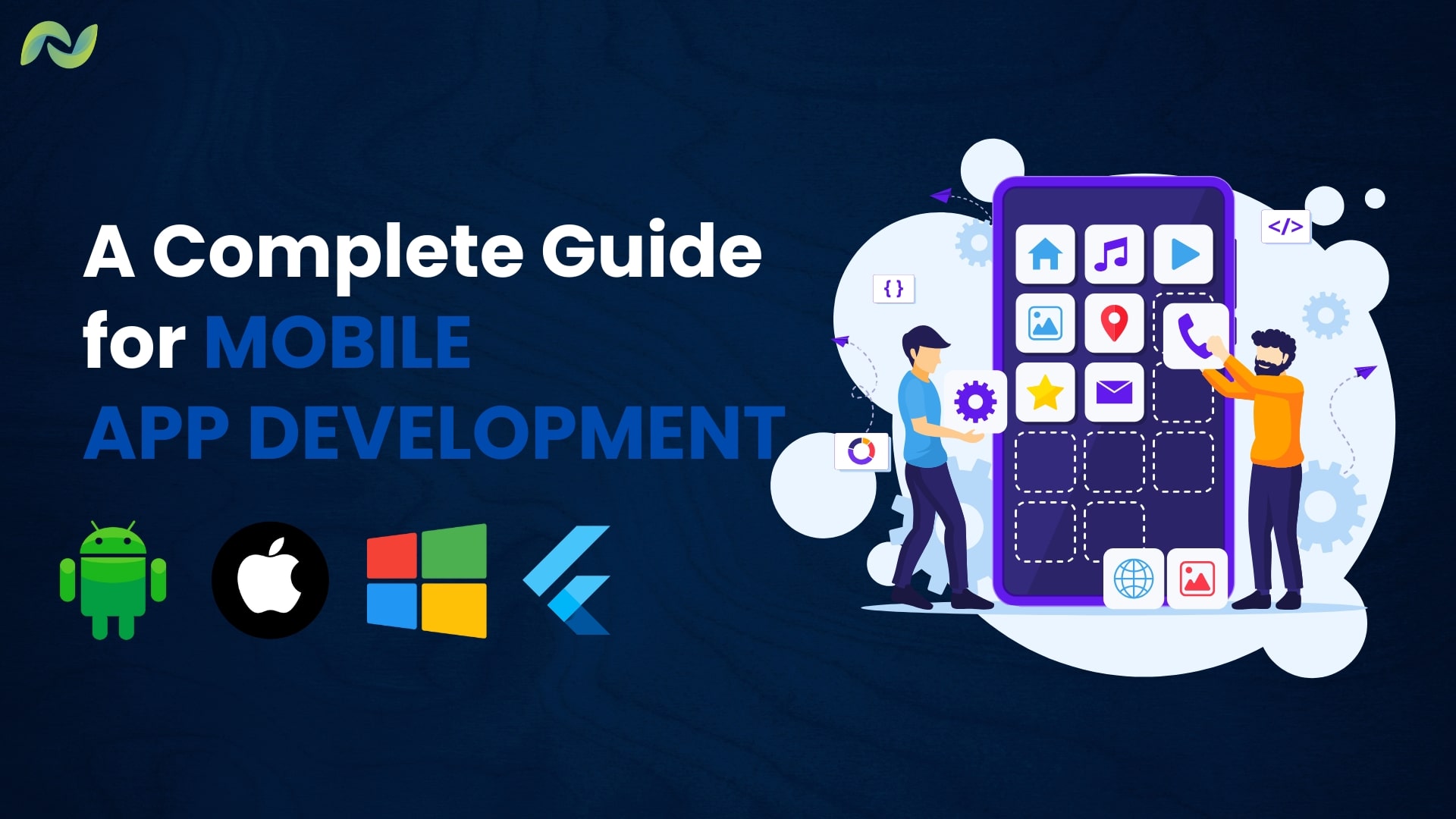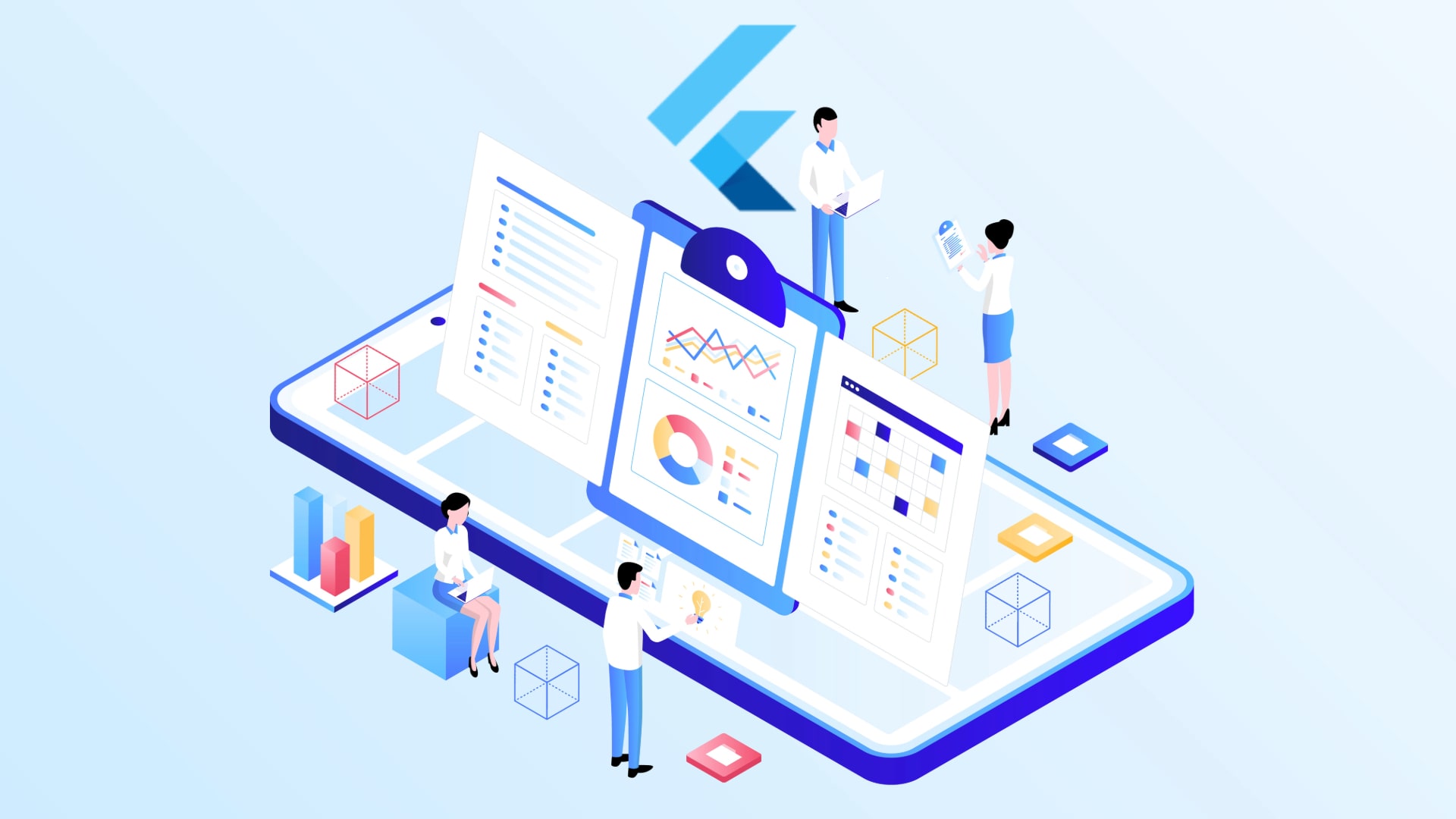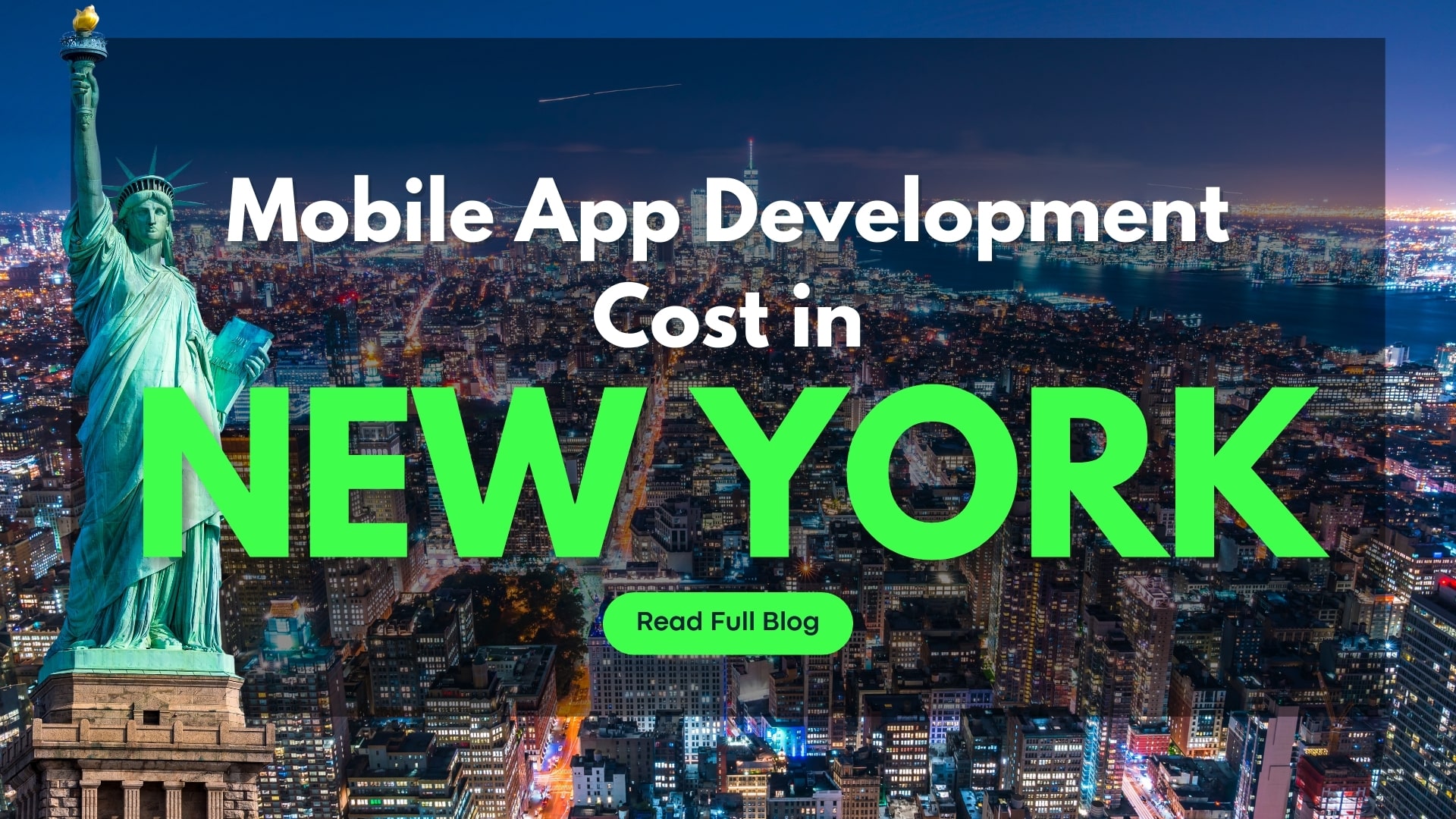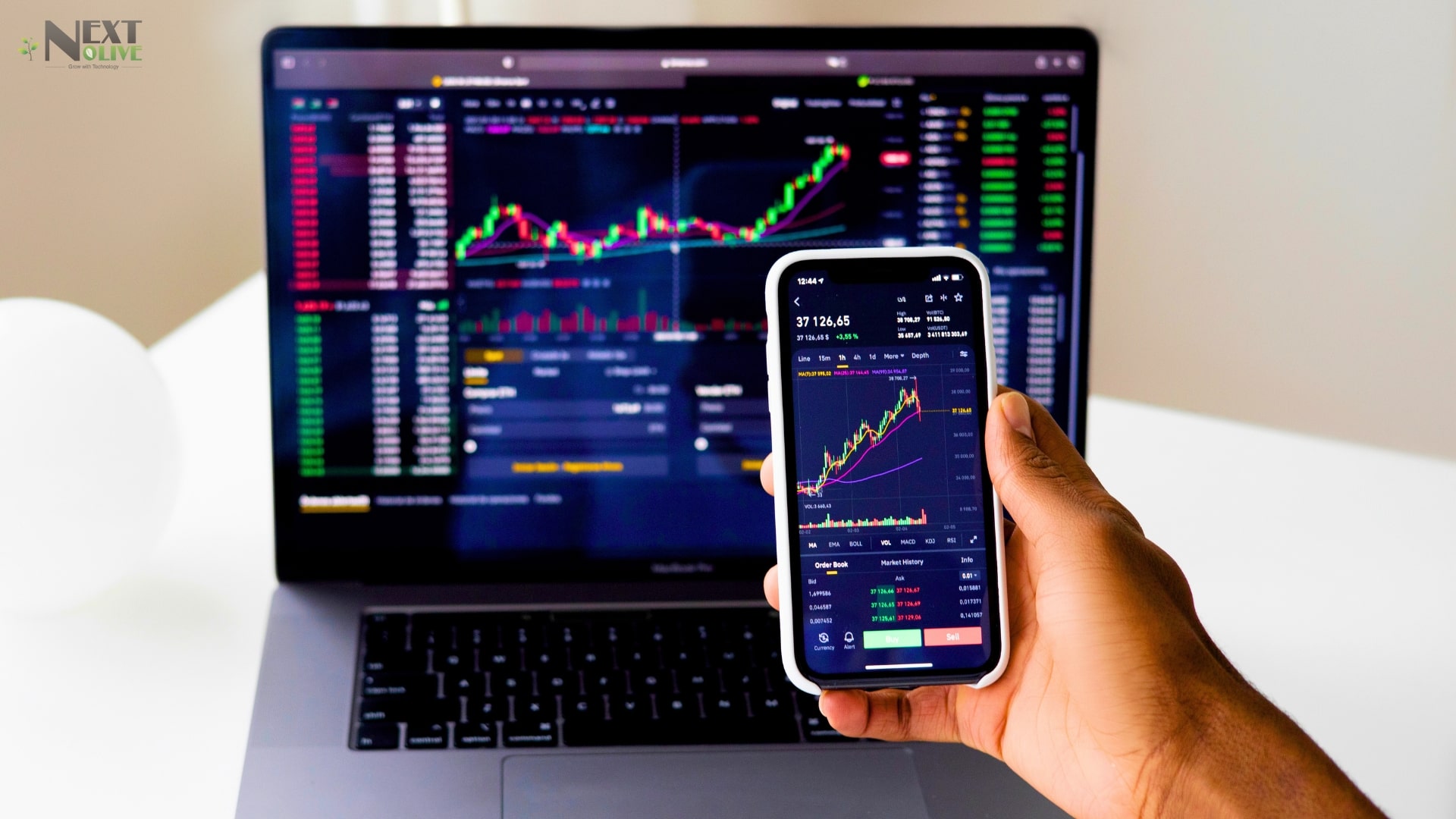Table of Contents
ToggleMobile App Development: Challenges, Costs and Features
Mobile app development is now a keystone of business strategy in today’s world, with businesses big and small competing to create apps that engage users and optimize their services. As a small-time entrepreneur or a well-established brand, getting into the fray of app development can be exciting and intimidating. From finding the correct mobile app developer to collaborating with a trustworthy app development firm, the process is full of pivotal choices that define the success of your project. However creating a mobile application is not only about innovation and creativity; it is also about overcoming challenges such as budget limitations, feature prioritization, and determining the appropriate tech stack. Here in this blog, we will dissect the most frequent problems mobile app developers encounter, discuss the expenses involved in bringing your product to reality, and identify some vital features that will help your app shine in today’s competitive world. If you are an experienced app developer or new to app development for your business, this guide is for you with real-world advice and tricks!
Benefits of Leveraging Mobile App Development for Your Business
[1] Enhanced Customer Engagement
A mobile app establishes a one-to-one relationship between your business and your customers. In contrast to websites, which users will or won’t visit regularly, apps remain sitting on their phones; a tap away. With personalized notifications, special offers, and updates, your audience can be regularly engaged and returning for more. This constant reminder serves to create loyalty and remind them of your brand.
[2] Boosted Brand Visibility and Recognition
Your app is like a billboard on your customer’s phone. They’re reminded of your brand every time they scroll through their apps, even if they’re not using it. A well-designed, easy-to-use app with your logo and colors assists in building brand recognition. Being on app stores gives credibility and the impression that your business is current with new technology.
[3] Improved Customer Service and Support
Mobile applications provide easy ways to provide customer support at the user’s fingertips. Through chatbots, FAQs, or messaging options, customers can get help without the inconvenience of extended waiting times. This type of responsive support can greatly enhance customer satisfaction, leading to good reviews and more effective customer relationships.
[4] Direct Marketing Channel
With push messages and in-app messaging, mobile apps enable you to speak directly with users. From introducing a new product, or promoting a special offer, to announcing company news, your message is delivered instantly. In contrast to emails that get sent to spam folders, push messages are more likely to be noticed and responded to.
[5] Increased Sales and Revenue
A user-friendly app simplifies shopping and makes it quicker, promoting more sales. Mobile payment compatibility, one-touch ordering, and personalized suggestions help users buy things more often. Providing loyalty options through the app can also incentivize repeat buying, improving your bottom line.
[6] Valuable Customer Insights
Mobile apps give you immediate information about customers’ preferences and behavior. You can see how users use your app, which products they look at most, and how frequently they come back. All this information assists in streamlining your business strategies, informing product development, marketing, and customer service enhancement.
[7] Strengthened Customer Loyalty
You can establish customer loyalty with a mobile app through personalized experiences. Reward points, referral bonuses, and VIP content are a few of the features you can use to make users feel appreciated and valued. Establishing an emotional bond with your app creates loyalty, which converts one-time purchasers into loyal advocates.
[8] Competitive Advantage
Many companies, especially small and medium-sized ones, lack mobile applications. By choosing to develop a mobile app, you set yourself apart from competitors who may only have a website. An app signifies that your business is forward-thinking and committed to enhancing customer satisfaction.
[9] Seamless Integration with Social Media
A mobile app can easily link with popular social media platforms, allowing users to share their favorite products or services in an instant. This organic form of marketing expands your reach and attracts new clients. Furthermore, integrating social media simplifies the login or registration process for users, improving their overall experience.
[10] Better Operational Efficiency
Mobile applications go beyond just customer engagement; they can also streamline internal processes. From managing inventory to enhancing communication among employees, apps can be tailored to improve business functions. Automating routine tasks through a mobile interface saves time and reduces errors, leading to greater overall efficiency.
Global Market Data of 2025 for Mobile App Development
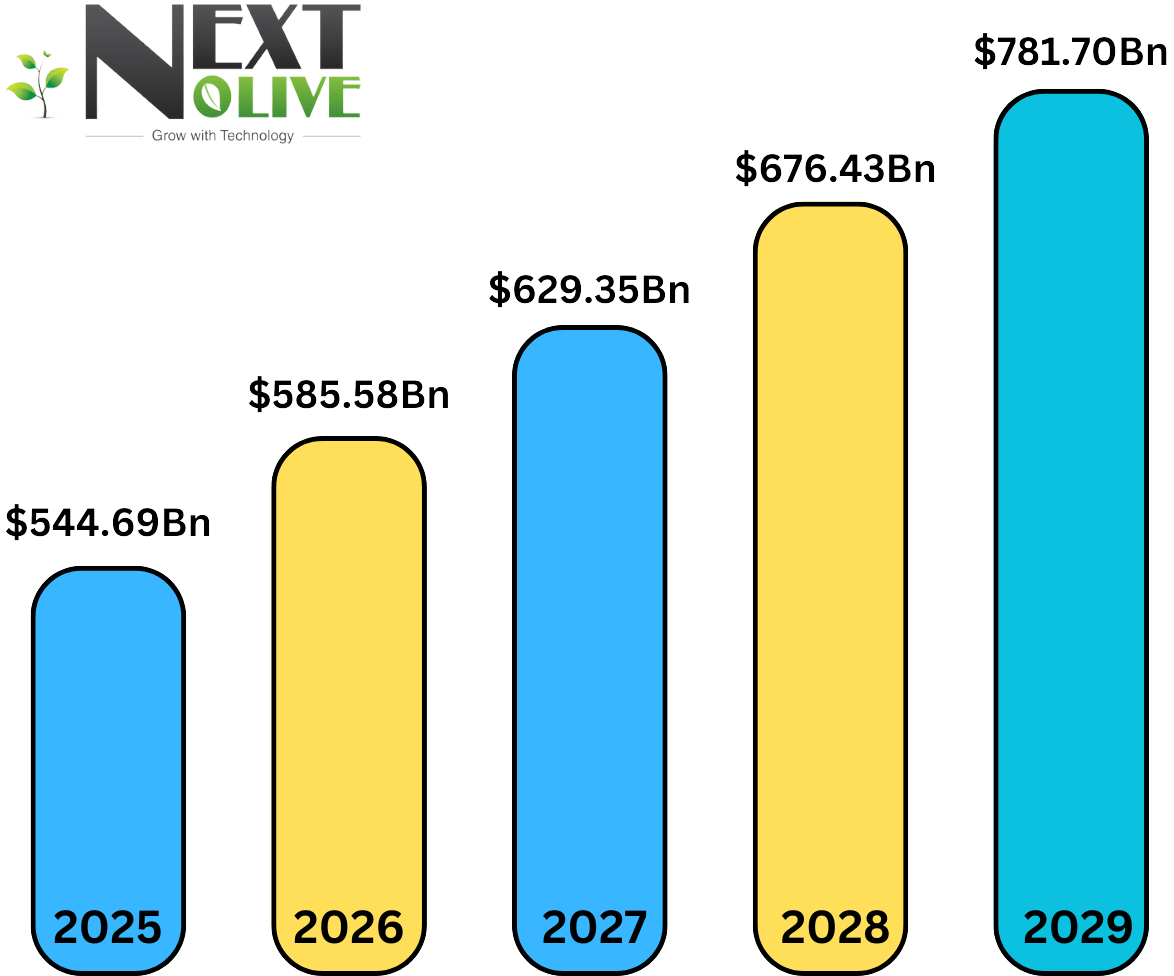
According to the report by Statista, the global market cap of app development is $544.69 Billion in 2025. With a CAGR of 7.48%, the market cap is expected to reach $781.70 Billion in 2029.
Types of Mobile Applications
[1] Native Apps
Native apps are designed and developed to run on a specific platform such as Android or iOS. The advantage of Native apps is that they can run efficiently and faster within the ecosystem of the platform. Native applications are developed using specific technologies such as Java or Kotlin for Android and Swift and Objective C for iOS. Some popular examples of native applications are Spotify and Pokemon GO.
[2] Hybrid Apps
Hybrid apps are unique applications that combine the features and functionalities of both native apps and web apps. They are cheaper to develop than native apps and lost fast. They are developed using web and native technologies such as HTML, Swift, Ionic, and CSS to run on any specific platform while utilizing the platform’s capabilities. Some examples of hybrid apps are Discord, BMW, and Tesla App.
[3] Web Apps
As the name says, web applications are developed for being able to run on the cloud and can be accessed using a web browser on any device such as a smartphone, tablet, or laptop regardless of any platform. Web apps can adjust their interface according to the device they are used in by the user. Web apps are created using technologies such as HTML5, CSS, Javascript, etc. An example of a web app is Microsoft Office 365 and Google Docs.
[4] Progressive Web Apps
Progressive Web Apps or PWAs are advanced versions of normal web apps. They have the capabilities of both normal web apps and native apps. They have many features like offline access, installation on the home screen of the user’s device, faster loading speed, etc. Some examples of progressive web apps are Pinterest, Telegram, Twitter, Tinder, etc.
Types of Mobile Apps for Different Industries
[1] E-commerce and Retail
- Shopping Applications: These apps allow users to buy various items such as electronics, groceries, etc using their smartphone and tablet.
- Rewards Applications: Reward apps are meant to provide discount coupons, redeem points, promotions, and vouchers to users.
- Payment Applications: These apps are used to initiate online payments and transactions by the users.
[2] Healthcare and Medical
- Telemedicine Applications: These apps are used to connect with health professionals for health consultations.
- Medical Information Apps: These apps provide information related to various medicines, diseases, and symptoms.
- Fitness Tracking Applications: Users can track their fitness goals such as calorie count, diet planning, sleep, nutrition, etc.
[3] Fintech and Banking
- Banking Applications: Banking apps are used by users to manage their bank accounts, transfer money and funds, etc.
- Insurance Applications: These apps offer various types of insurance such as health, life, etc at various prices.
- Investment and Personal Finance Management Apps: Investment apps are used to buy/sell stocks, do trading, manage SIPs, etc. Personal finance apps allow users to track and manage their expenses.
[4] Logistics and Transportation
- Ride Booking Applications: These apps are used to book rides, connect with drivers, and search cabs.
- Navigation Applications: As the name says, navigation apps provide step-by-step navigation assistance to the users. For example, Google Maps or Bing Maps.
- Delivery Applications: Delivery apps are used to track and manage deliveries and offer customer support.
[5] Manufacturing and Quality Control
- Material and Inventory Management Apps: Easily manage the quantity of raw materials and inventory items.
- Workforce Management Applications: It is like an HRMS but in app form which is used to manage workers, track attendance, manage payroll, etc.
- Quality Control Applications: Helps to manage and track the overall quality of the manufactured items before dispatch.
[6] Ed-Tech and E-Learning
Educational Video Games: Users can learn while playing learning games such as quizzes puzzles, etc.
E-Learning Apps: Offers online courses and other e-learning materials to users.
Language Learning Applications: Provides personalized language learning materials and other guides to users who are learning any language.
Integration of Various Emerging Technologies of 2025 in Mobile Application Development

[1] Artificial Intelligence and Machine Learning
AI and ML are some of the latest and rapidly emerging technologies that are being used in developing mobile applications. Many mobile app developers create mobile apps that are highly intelligent and offer personalized experiences to users. AI chatbots are integrated within apps to assist in solving the queries of users easily and efficiently. Machine learning models predict any security issue by identifying patterns and anomalies and thus safeguard the user data. ML algorithms help in optimizing the app’s performance and automate manual tasks.
[2] Blockchain Technology
Blockchain is considered one of the best technologies for developing safer mobile applications. Blockchain works on decentralizing and encrypting the data using cryptographic techniques which helps to prevent any data breach. This also maintains the data integrity of the application. Blockchain technology allows secure transactions and transparency when it comes to visibility and accountability and also helps to build trust between users and mobile app providers. Blockchain technology is used in many different industry sectors such as Fintech, healthcare, supply chain management, etc.
[3] Internet of Things
IoT is another name in the list of future technologies. IoT involves connecting the device with the mobile application via Bluetooth or Wifi. Then, the mobile app sends signals and data to the IoT devices and receives data from the installed sensors of the device. Then the gathered data is sent to the cloud for processing and obtaining results such as switching a light bulb on or off. IoT has many applications such as connecting with wearable devices such as smartwatches and fitness bands, monitoring equipment performance, and many more in different industries.
[4] AR/VR/XR
Augmented Reality, Virtual Reality, and Extended Reality are a game changer in mobile application development. These technologies enable a user to see and experience things that are too far away using their phone. These technologies are extensively used in e-commerce and real estate sectors. In e-commerce, users can virtually try new clothes, and glasses, and view items, etc using the technologies. In real estate, users can see the house in full 3D without actually visiting the house before purchasing. AAR/VR/XR is also used in the tourism sector for virtual tours of various locations around the world.
[5] Cloud Computing
It is also known as Mobile Cloud Computing (MCC). An MCC-enabled mobile app can leverage the power of servers to directly manage, process, and store the data without using the native device’s hardware resources to deliver services to users on their mobile devices. MCC has many advantages such as superior performance, high storage capacity, more processing power, cross-platform compatibility, scalability, real-time data synchronization, and better security.
[6] Edge Computing
Edge computing is one of the newest technologies that is used in mobile applications. In edge computing, the processing and storage of data is done near the source of data generation rather than relying on cloud servers. The source of data generation in the case of mobile apps can be Wifi or cellular towers. The lower the distance, the lower the latency, and thus faster response time. It also enables better reliability, increased bandwidth efficiency, and better security and privacy.
How to Develop a Mobile App for Your Business in 7 Steps

Step 1: Requirement Gathering and Analysis
Before any application is developed, it is necessary to gather all the requirements of the mobile app project. The requirements can be functional and non-functional, UI/UX, purpose of the app, features, and many more. The requirements are then thoroughly analyzed to check their feasibility in terms of legal and logical implementation. Once everything is done, an SRS (Software Requirement Specification) document is prepared to finalize the client’s requirements.
Step 2: Planning
Planning is crucial in any type of project. In the planning phase, a team of project managers, developers, and designers sit together and discuss various aspects of the mobile app project. Factors such as the selection of the right technology, development methodology and approach, defining different modules of the app, and many more. Once the planning is done, the next phase of designing begins.
Step 3: Designing and Prototyping of the App
In the designing phase, the team of designers creates multiple models of the UI/UX of the app. Whichever design aligns appropriately with the proposed requirements, is selected and a prototype of the app is developed to get an idea of how the app would look after development. Once the prototype is approved by the client, full-scale development of the mobile app starts as per the prototype.
Step 4: Development of the Mobile App
This is the main stage of the whole development process. In this step, the whole project is divided into functional and non-functional modules. Then each module is assigned to a developer or a small team to develop. The development of the app is done with the pre-selected technologies, languages, and frameworks. For example, sports betting app development, or OTT app development would require 2 to 6 or over 12 months depending on factors such as type, size, complexity, platform, etc.
Step 5: QA Testing and Debugging
When the development is done, the testing of the app begins. There are mainly 2 types of testing done initially, that is, unit testing and integration testing. Unit testing is done on individual components and modules while integration testing is done after the modules are combined. Testing ensures the finished app works as intended and is error-free and bug-free. There are also several different types of testing such as system testing, user acceptance testing, regression testing, functional testing, non-functional testing, etc.
Step 6: Deployment, Launching, and, Marketing
After the testing is completed, the mobile app is deployed on the respective platform such as the Play Store of Android and the App Store of iOS. But launching and deployment of the app is not enough. Extensive marketing in the form of advertisements and other formats is also required to reach a wider audience.
Step 7: Maintenance and Updates
Every mobile application cannot run for long in this ever-changing market without new features. So, it is mandatory to keep the app running by providing regular updates and bug fixes along with new features that align with the market trends to stay ahead of the competition. You can contact a reliable mobile app-building company to maintain and update your application.
Tech Stack for Developing Mobile Applications
[1] Native Mobile Application Development
[A] Android
- Languages: Java, Kotlin
- Frameworks: Android UI, Jetpack Compose
[B] iOS
- Language: Swift, Objective C
- Frameworks: UIKit, Swift UI
[C] Cross Platform App Development
- Languages: Dart, TypeScript, JavaScript, Kotlin
- Frameworks: Flutter, React Native, Kotlin Multiplatform
[2] Backend Technologies
[A] Backend as a Service (BaaS)
- AWS Amplify, Firebase
[B] Databases
- MySQL, PostgreSQL, Firebase Realtime Database, Cloud Firestone
[C] APIs
- RESTful API, GraphQL
[D] Version Control
- Git, GitHub, GitLab, BitBucket
[3] IDEs
- Android Studio, Xcode
How Much Does it Cost to Develop a Mobile App in 2025?
Factors Affecting Mobile Development:
[1] Mobile App Complexity
- Simple or Basic Apps: These apps have basic functionalities and generally have lesser costs. The mobile App development cost lies roughly between $5,000 to $30,000
- Medium-Sized Apps: These kind of applications have slightly advanced features and cost between $30,000 to $100,000.
- Large and Advanced Apps: These apps are highly complex and have features like AI/ML, blockchain, etc. The cost of developing these apps ranges between $100,000 to over $250,000.
[2] Type of App Development
- Native App Development: Native app development generally costs much more because of the time and resources needed to develop an application for on platform like Android or iOS.
- Cross-Platform Development: Cost is lesser than native app development because one app is developed for different platforms using frameworks such as Flutter or React Native.
[3] Functionality and Features
- Basic Features: Basic features like login, signup, etc cost less.
- Advanced Features: Features like GPS navigation, real-time messaging, and integration of AI/ML cost much more.
[4] Location of the Team
- The location of the team also matters a lot in app development costs. A team in North America or Europe may charge higher than a team in Asia.
[5] Backend
- A dimple data storage costs less, while a more secure and cloud-enabled database costs more.
[6] Maintenance and Updates
- Periodic maintenance and updates add up to the cost significantly. It costs between $3,000 to $10,000 per month depending on the size and complexity of the application.
General Cost Estimation
- Basic Apps: $5,000 to $30,000
- Medium-Sized Apps: $30,000 to $100,000
- Large-Sized Apps: $100,000 to over $250,000
Avoid Common Mistakes in Application Development
[1] Ignoring the UI/UX
The UI/UX is what the app is known for. Ensure to creation of engaging and user-friendly designs and conduct proper user research.
[2] Ignoring Optimization and Performance
Every user loves a lag-free application. Always ensure the app is well-optimized for every device and does not drain the battery.
[3] No Cross-Platform Compatibilit
Nowadays, most of the applications are designed for working on multiple platforms. Ensure the app is cross-platform compatible as it will reduce the time and resources to develop and maintain the app.
[4] Insufficient Testing of the App
Testing is necessary before launch as it helps to highlight any errors, bugs, or missing things in the application. A less-tested app would cause trouble for the users.
[5] Bad Security Practices
Failing to secure the user data might lead you to trouble. Implement strong encryption techniques and protect user data and privacy.
[6] Ignoring App Store Optimization
App store optimization is a must as it will help users to find your mobile app easily using relevant keywords.
How to Select a Mobile App Development Company in 2025?
Selecting a good mobile app development firm is mandatory. If you want your application to be developed by the best app developers, you need to keep some important points in mind. A reliable mobile app-creating agency should offer timely project delivery, incorporate end-to-end communication, use the latest tech stack to develop mobile apps and be client-focused. Well, one such company is Next Olive, which has over 13 years of experience and over 200 experienced mobile application developers. The company offers its services in the USA, UK, Malaysia, Saudi Arabia, South Korea, and over 20 other countries.
Conclusion
In this blog, we covered the details regarding how to develop a mobile application from scratch. We also covered various types of applications, learned the development process, and got to know about the tech stack and general cost estimation of developing a mobile app. In conclusion, if you are willing to develop your app, it is recommended to hire an application development firm like Next Olive.
Frequently asked questions (FAQs)
Next Olive is the leading Mobile application development company in USA that has over 13 years of experience and over 200 experienced mobile app developers. The company serves over 20 countries such as the USA, UK, Saudi Arabia, UAE, etc.
The time required to fully create a mobile app depends on various factors such as type, platform selected, complexity, etc.
- Basic Apps: 2 to 4 months
- Medium-Sized App: 4 to 6 months
Advanced Apps: 6 to over 10 months
We offer various types of app development services such as:
- Android App Development
- iOS App Development
- Flutter Application Development
- Enterprise App Development
- Web Application Development
- Shopify application development
- Custom Mobile Application Development
You can contact Next Olive to hire Flutter developers or hire iOS developers or any freelance developer as per your requirements.

